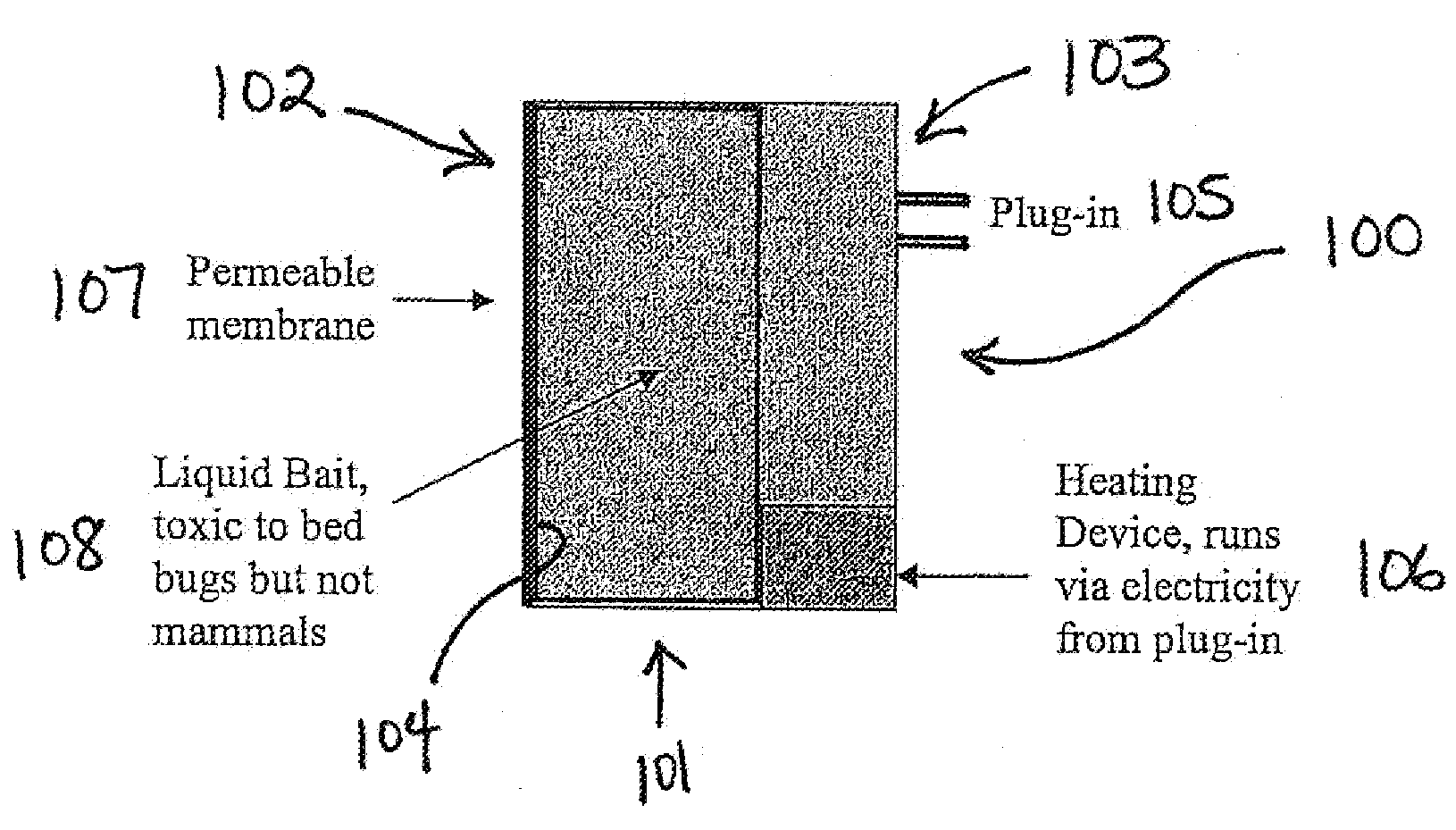Insect bait station and method of using
a technology of insect bait and bait station, which is applied in the field of insect bait station, can solve the problems of difficult to eradicate, the bed bugs can live for relatively long periods of time without, and the location of bed bugs is more vulnerable to infestation
- Summary
- Abstract
- Description
- Claims
- Application Information
AI Technical Summary
Problems solved by technology
Method used
Image
Examples
example 1
[0042]Boric acid is an insecticidal dust that causes death upon consumption by most insects with chewing mouthparts. Bed bugs have blood-feeding, piercing / sucking mouthparts that limit their ability to pick up and consume the insecticidal dust in its powder form. To determine whether consumption of boric acid kills bed bugs, several mixtures of boric acid and phosphate buffer, DUPONT™ ADVION™ fire ant bait including indoxacarb and phosphate buffer, and just phosphate buffer solutions were made. Phosphate buffer solutions having a pH of 5.2 and a pH of 7.4 were tested, and only the phosphate buffer solution having a pH of 7.4 was ingested by the bed bugs. Multiple groups of ten bed bugs fed on the solutions via artificial membrane feeding systems as described above, and post-consumption mortality was recorded.
[0043]In one test, the artificial feeding systems included the following eight solutions: a first control solution including approximately 5 milliliters of human blood, a second...
example 2
[0046]This Example illustrates bed bug mortality when exposed to solutions containing minimum risk pesticides. Minimum risk pesticides are a special class of pesticides that are not subject to federal registration requirements because their ingredients, both active and inert, are demonstrably safe for the intended use. Minimum risk pesticides that meet certain criteria are exempt from federal registration under section 25(b) of the Federal Insecticide, Fungicide, and Rodenticide Act (FIFRA) incorporated herein by reference in its entirety for all purposes. The U.S. Environmental Protection Agency (EPA) does not review or register pesticides that satisfy the 25(b) criteria, though registration is required by most states.
[0047]To determine whether consumption of ingredients listed under section 25(b) of the Federal Insecticide, Fungicide, and Rodenticide Act kills bed bugs, several mixtures of salt, citric acid, potassium sorbate, sodium lauryl sulfate (SLS), castor oil, sesame oil, c...
example 3
[0050]This Example illustrates the mortality of bed bugs exposed to varying concentrations of sodium chloride dissolved in water. Example 2 indicated that mortality occurred in groups of bed bugs exposed to solutions containing various concentrations of sodium chloride. However, not all cases of mortality correlated with engorgement (feeding to completion).
[0051]To determine optimum concentrations of sodium chloride solutions (for both feeding and mortality), bed bugs were offered the following concentrations sodium chloride diluted in water on a weight percent basis: 0, 0.05, 0.25, 0.5%, 1%, 2%, 3%, 4%, 5%, 6%, 7%, 8%, 9%, 10%, 12%, 14%, 16%, 18%, 20%, 25%, 30%, 35%. 40%, 50%, 60%, 70%, 80%, 90%, and 100%. Each solution was offered to groups of 10-20 bed bugs via the artificial feeding stations described above. After approximately 60 minutes, the containers of 10-20 bed bugs were removed from the feeding station and the number that fed to completion was recorded. Post-exposure mort...
PUM
 Login to View More
Login to View More Abstract
Description
Claims
Application Information
 Login to View More
Login to View More - R&D
- Intellectual Property
- Life Sciences
- Materials
- Tech Scout
- Unparalleled Data Quality
- Higher Quality Content
- 60% Fewer Hallucinations
Browse by: Latest US Patents, China's latest patents, Technical Efficacy Thesaurus, Application Domain, Technology Topic, Popular Technical Reports.
© 2025 PatSnap. All rights reserved.Legal|Privacy policy|Modern Slavery Act Transparency Statement|Sitemap|About US| Contact US: help@patsnap.com


